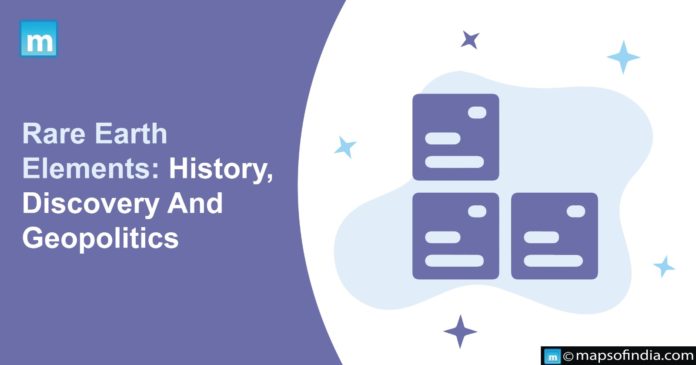What are rare earth metals?
They consist of seventeen different metallic components. These consist of the 15 lanthanides on the regular table and the scandium and yttrium, which have physical and chemical characteristics comparable to the lanthanides. Since they have distinct magnetic, luminescence, and electrochemical characteristics, these minerals are employed in a wide range of present technology, spanning consumer technology, networks and computers, telecommunications, health care, national security, and clean energy technologies.
These Rare earth elements are required by even futuristic technology. For example, high-temperature superconducting, safe hydrogen storage and transportation for a post-hydrocarbon economy, and so on. They were labelled “rare earth” since it had been formerly challenging to technically separate them from their oxide states. They are present in various minerals but in insufficient amounts to be commercially exploited.
History and finding
Although rare earth has existed since its creation, its presence was not discovered until the mid-18th century. Carl Axel Arrhenius, a Swedish army officer found a peculiar black mineral in a tiny quarry in Ytterby in 1787. (a small town near Stockholm). That material was a combination of rare earth and cerium and became the first element to be separated in 1803.
How did China get control of rare earth?
China has gradually gained worldwide dominance in rare earth and, at one point, supplied 90% of the rare earth required by the globe. However, it has now dropped to 60%, with the remainder generated by other nations, notably the Quad ( Japan, India, Australia, and the United States).
Since 2010, when China restricted supplies of Rare Earths to the United States, Japan, and Europe, manufacturing facilities in Australia and the United States have emerged, along with smaller ones in Asia, Africa, and Latin America. Nonetheless, China controls the majority of manufactured Rare Earths.
India’s Rare Earth Policy
The Department of Atomic Energy and the Bureau of Mines excavated in India. Extraction and treatment were originally undertaken by a handful of small private enterprises but are managed by IREL, a Government Sector Enterprise under the purview of the Department of Atomic Energy.
In India, government-owned companies such as IREL hold a stronghold on the principal REE-containing mineral, monazite beachfront sand, in various coastal states. IREL produces rare earth oxides and distributes them to foreign corporations that harvest metals and develop final products in other countries. The primary purpose of IREL is to deliver thorium generated from monazite to the Department of Atomic Energy.
The Way Forward
India should learn from other mature countries how they aim to secure its mineral needs and seek to join multilateral fora on ensuring crucial mineral supply chains – or leverage existing collaborations, such as Quad and BIMSTEC, to develop such discussions.
There must also be top-level government decision-making to strategize on developing vertically integrated production chains of green technology production, or we risk falling well short of our climate change prevention objectives. India must create a new Rare Earths Department to operate as a watchdog and promoter for enterprises in this industry.




